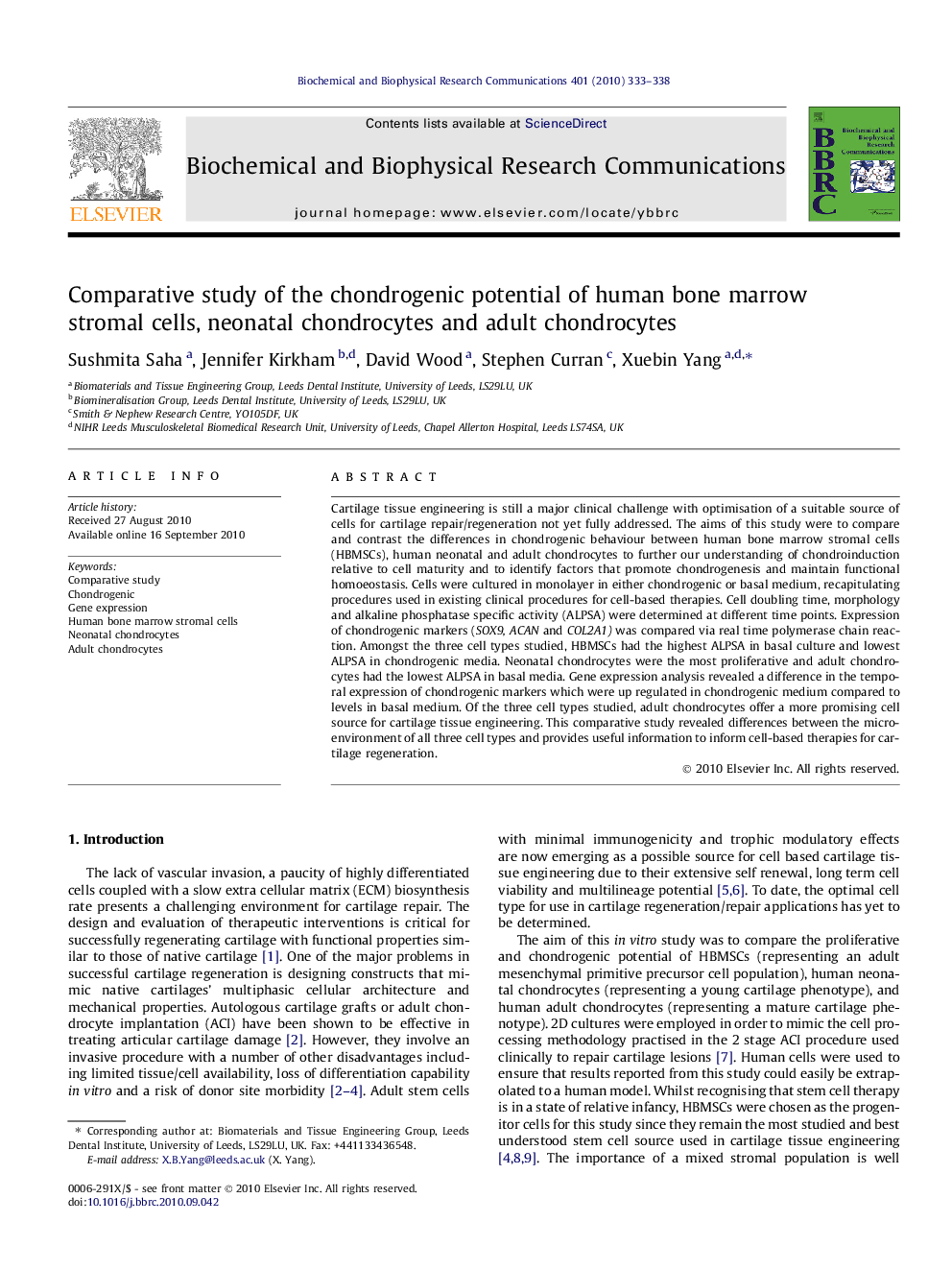| Article ID | Journal | Published Year | Pages | File Type |
|---|---|---|---|---|
| 1931298 | Biochemical and Biophysical Research Communications | 2010 | 6 Pages |
Cartilage tissue engineering is still a major clinical challenge with optimisation of a suitable source of cells for cartilage repair/regeneration not yet fully addressed. The aims of this study were to compare and contrast the differences in chondrogenic behaviour between human bone marrow stromal cells (HBMSCs), human neonatal and adult chondrocytes to further our understanding of chondroinduction relative to cell maturity and to identify factors that promote chondrogenesis and maintain functional homoeostasis. Cells were cultured in monolayer in either chondrogenic or basal medium, recapitulating procedures used in existing clinical procedures for cell-based therapies. Cell doubling time, morphology and alkaline phosphatase specific activity (ALPSA) were determined at different time points. Expression of chondrogenic markers (SOX9, ACAN and COL2A1) was compared via real time polymerase chain reaction. Amongst the three cell types studied, HBMSCs had the highest ALPSA in basal culture and lowest ALPSA in chondrogenic media. Neonatal chondrocytes were the most proliferative and adult chondrocytes had the lowest ALPSA in basal media. Gene expression analysis revealed a difference in the temporal expression of chondrogenic markers which were up regulated in chondrogenic medium compared to levels in basal medium. Of the three cell types studied, adult chondrocytes offer a more promising cell source for cartilage tissue engineering. This comparative study revealed differences between the microenvironment of all three cell types and provides useful information to inform cell-based therapies for cartilage regeneration.
Research highlights► This study has characterised three different cell types under conditions similar to those used for autologous chondrocyte implantation (ACI) for applications in cartilage repair/regeneration. ► Compared for the first time the chondrogenic potential of neonatal chondrocytes with human bone marrow stromal cells (HBMSCs) and adult chondrocytes. ► Demonstrated that adult chondrocytes hold greatest potential for use in ACI based on their higher proliferation rates, lower alkaline phosphatise activity and enhanced expression of chondrogenic genes. ► Demonstrated the need for chondroinduction as a necessary pre-requisite to efficient chondrogenesis in vitro and, by extrapolation, for cell based therapy (e.g. ACI or cartilage tissue engineering).
